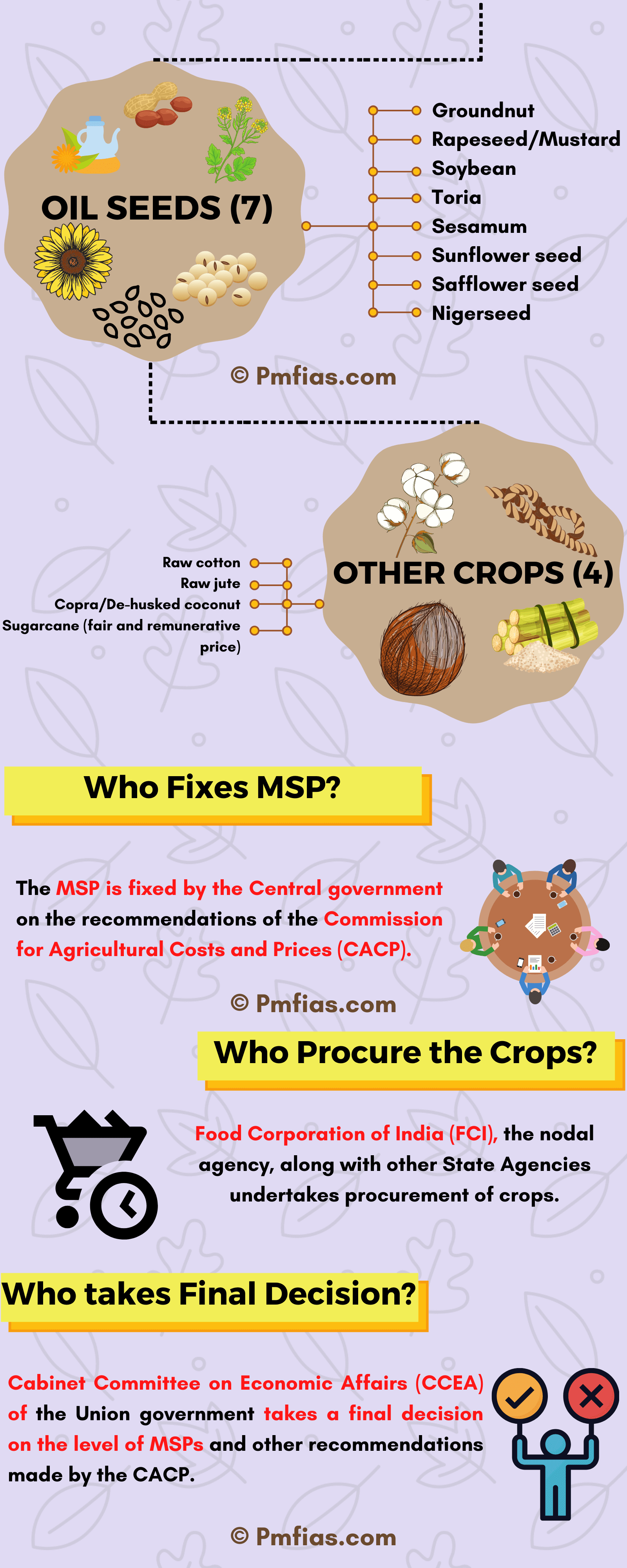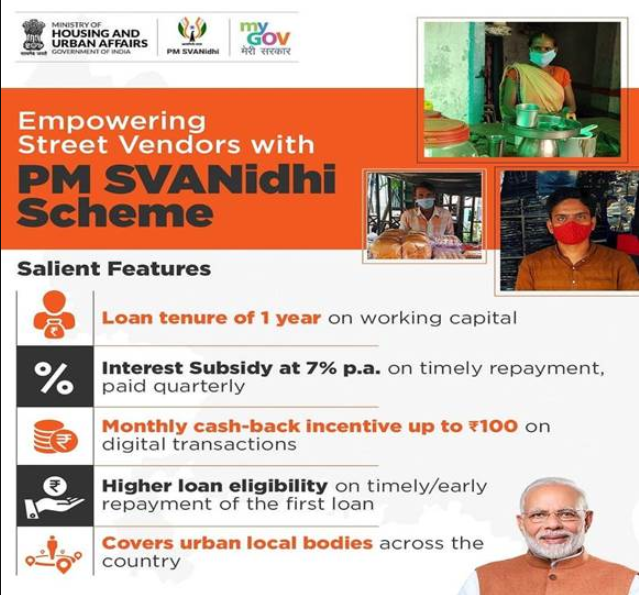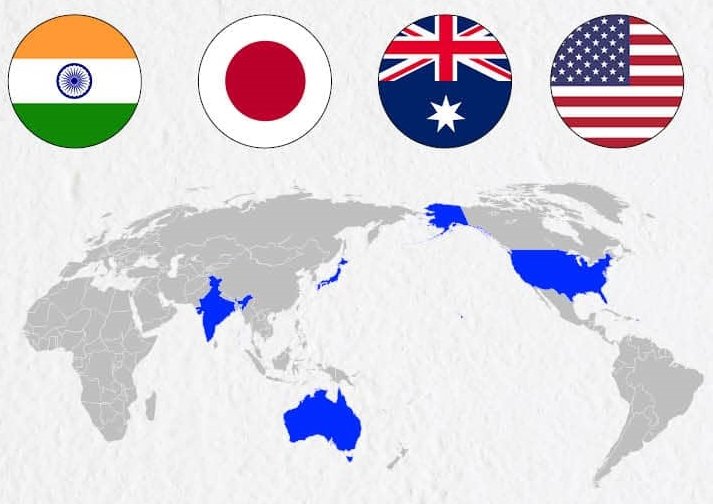
Current Affairs February 03, 2024: Police Reforms, Credit Enhancement Guarantee Scheme for Scheduled Castes, Track Child and GHAR Portal, Sugar subsidy scheme for Antyodya Anna Yojana Families, Exercise Vayu Shakti, Sirpur Lake
Subscribers of "Current Affairs" course can Download Daily Current Affairs in PDF/DOC
Subscribe to Never Miss an Important Update! Assured Discounts on New Products!
Must Join PMF IAS Telegram Channel & PMF IAS History Telegram Channel
{GS2 – Governance – Police} Police Reforms
- Context (IE): Several state governments have passed Police Acts that are against SC verdicts on police reforms. Centre, too, has failed to legislate a model Act.
- While the GoI has been talking of “One Nation, One Ration Card”, “One Nation, One Registry”, and even “One Nation, One Election” in police matters, every state is legislating a different Police Act.
- Eighteen states have already passed the Police Acts.
- These Acts are being passed in compliance with the SC’s directions on police reforms given in 2006.
- The objective behind these laws is to give legislative cover to the existing arrangement and bypass the implementation of SC directives.
Objectives of Police Reforms
- Police reforms aim to transform the values, culture, policies and practices of police organisations.
- It envisages police performing their duties with respect for democratic values, human rights, and the rule of law.
- Enhance police collaboration with courts, corrections, and oversight authorities for improved security sector interaction and oversight.
Need for Police Reforms
- Although police is a State subject, most State police Acts are influenced by the Central Police Act of 1861 or the Model Police Act of 2006.
- Police are seen as puppets of politicians, which hampers their credibility.
- The emergence of new crimes like Cyber Crime and counter-insurgency calls for technological upgradation of the police system in India.
- There are issues in the registration of crimes where heinous crimes go off-recorded.
- CBI is one critical area that demands reforms. There is a need to revisit the functioning of CBI and address the impending vacancy in the organisation.
- India dreams of being the ‘Net Security Provider’ in the region; an overhaul of the police reforms is necessary.
Issues in the Police Department
Colonial Legacy
- The Police system in India is based on the obsolete and archaic Indian Police Act of 1861, which the colonial government enacted to curb dissent voices.
Accountability to the Political Executives vs. Operational Freedom
- The police system in India is under the superintendence of political executives.
- This unchecked power has adversely impacted the police system, leading to biased performances.
- The 2nd Administrative Reforms Commission recommended that political power should be limited to ensure that police function by the law of the land.
- The National Police Commission: Political superintendence should be defined to prevent arbitrary interference in operational duties, transfers, and recruitment.
Public Perception
- The police is not seen as one acting as a protector of the citizens but is viewed more as a tool of oppression.
- The use of torture and custodial deaths have become a common phenomenon in recent years.
- In the 1900s, several cases of death in police custody using torture or harsh punishments were observed.
- The Administrative Reform Commission found that people view police as being corrupt, inefficient, politically partisan, and unresponsive.
Torture protocol
- Although India has voluntarily signed the “United Nations Convention on Torture”, we have yet to receive a proper national protocol or law on torture.
- The police are in charge of regulating protocols according to the state or central guidelines.
Overburdened Force
- Police- people ratio in India is 192 police officers per lakh population.
- The diversity of functions, compounded with a shortage of personnel (as high as 24%), deteriorates the quality of policing and leads to long working hours and psychological distress among the police force.
- The United Nations has recommended 222 police officers per lakh population.
Constabulary Related Issues
- The share of the constabulary is as high as 86% of the police force.
- The Padmnabhiah Committee and the 2nd ARC: Working conditions of constables are poor.
- The wide range of responsibilities entrusted to them and their ill training add to the already present woes.
- The promotion mechanism could be more efficient, where a constable could only rise to the post of head constable.
Psychological Pressure
- The diversity of functions and shortage of personnel results in long working hours (14 hours/day).
- The issue was highlighted in 2018 after the death of a constable who was denied leave despite his bad health.
Infrastructural Issues
- The CAG report revealed significant shortcomings in the police infrastructure.
- There is a need for more vehicles, which leads to delays in response time.
- Further, the state police weaponry needs to be updated.
- For example, Rajasthan and West Bengal had shortages of 75% and 71%, respectively.
- There is also a need for washroom facilities and essential clean drinking water.
- Control rooms, too, need to be upgraded in the face of changing times.
- This is due to the fact that a large portion of police expenditure is spent on the wages of police officers, and fewer funds are available for the acquisition of modern weaponry, vehicles, etc.
Difficulties expressed by the Police force
- Excessive workload due to inadequacy of manpower, long working hours even on holidays and the absence of a shift system.
- The non-cooperative attitude of the public at large.
- Inadequacy of logistical and forensic backup support.
- Inadequacy of the state of art training facilities in the investigation, particularly in-service training.
- Lack of coordination with another sub-system of the criminal justice system.
- Distrust of the laws and courts.
- Misuse of bail and anticipatory bail provisions.
- Directing police for tasks that are not part of policing.
- Interrupting investigation by withdrawing for law and order duties in the midst of investigation.
- Political and executive interference.
- Existing preventive laws being totally ineffective in curbing criminal tendencies of hardened criminals.
Major Commissions on Police Reforms

National Police Commission 1977-81
- It was constituted in 1977 and submitted eight reports from 1979 to 1981.
Major Recommendations
- The system of working constables should be radically changed. It emphasised overhauling the training processes for constables.
- Setting up a state security commission in each state.
- Limiting the powers of the state government to ensure that the police perform their duty by the law of the land.
- Assured minimum tenure for the chief of the police in each state.
- The DSP should be exclusive to posting officers in charge of police stations.
- The posting of SPs should be the exclusive responsibility of the chief of police.
- The internal management of the police should be entirely within the purview of the chief of police.
Ribeiro Commission 1998
- The Ribeiro Commission was set up after the directions of the S.C. in Prakash Singh versus UOI and another case.
Major recommendations
- A Police Establishment Board (PEB) is to be constituted in every state with DGP and four senior officers to monitor transfer, promotion, rewards, and punishment issues.
- Replacing the Police Act of 1861 with a new Police Act.
- An Independent Police Recruitment Board (PRB) is to be established in every state to look into recruiting non-gazetted rank police officers.
- Quality training to improve the effectiveness of the police.
Padmanabhaiah Committee 2000
- Decrease in the age of constables to be recruited.
- Re-train the existing constabulary to imbibe the right attitudes; compulsory retirement of constables unable to complete the training process.
- A Police Training Advisory Council (PTAC) is to be set up at the central and state levels to advise on matters related to police training.
- Separation of investigation from law and order work.
- An Additional Superintendent of Police to look into crime and investigation work.
- Officers would man crime prevention cells in every district specialised in crime prevention work.
- Non-statutory District Police Complaints Authority (DPCA)to be set up.
Malimath Committee 2002-03
- The Committee on Reforms in the Criminal Justice System made 158 recommendations, including that of setting up a central law enforcement agency.
Police Drafting Committee 2005- Model Police Act, 2006
- The Police Drafting Committee was set up under the chairmanship of Soli Sorabjee.
- It was entrusted with the task of drafting a new Police Act.
The major recommendations
- The state government is to be responsible for the superintendence of police.
- The State Security Commission (SSC), as suggested by the National Police Commission, will be set up, which would be called the State Police Board.
- The DGP should be among the three senior officers selected by the State Police Board.
- All officers are to be provided with a minimum tenure of two years, irrespective of their date of superannuation.
- A Police Station shall be headed by a Station House Officer (SHO), not below the rank of Sub-Inspector of Police.
- The Power to transfer is given to different authorities depending on rank or post. Transfer is prohibited by any authority other than the one specified in law.
NHRC Recommendations, 2021
Burden of Proof
- The MHA and the Law Ministry should implement the recommendations of the 113th Law Commission report to add Section 114 B to the Indian Evidence Act of 1872.
- The burden to explain injuries sustained in police custody rests on the authorities, presuming police inflicted the injury.
Technology-friendly Criminal Justice System
- The legal framework should be made technology-friendly to speed up the criminal justice system.
Ensuring Accountability
- SC’s December 2020 order to install CCTV cameras with night vision in all police stations be “implemented immediately” to ensure accountability.
Community Policing
- Involvement of trained social workers and law students with police stations as part of community policing and incorporating community policing in police manuals, laws and advisories.
Application of SC directives in Prakash Singh Case
- The Union Ministry of Home Affairs (MHA) and the State Governments should set up Police Complaints Authorities (PCA).
- Implementation of Other Directives by SC in Prakash Singh case.
S.C on Police Reforms
Prakash Singh v. Union of India case
- Prakash Singh served as DGP of UP Police and Assam Police.
- He filed a PIL in the SC post-retirement in 1996, seeking police reforms.
- In a landmark judgment, the SC in 2006 directed all states and UTs to bring in police reforms.
- These were to ensure that the police could do their work without any political interference.
SC Directions in Prakash Singh Case
- Fixing the tenure and selection of the DGP to avoid giving the post to the officers about to retire.
- A minimum tenure for the Inspector General (IG) of Police to ensure they are not transferred mid-term by politicians.
- Postings of officers to be done by PEB to insulate powers of transfers from political leaders.
- The PEBs are comprised of police officers and senior bureaucrats.
- Fixed two-year tenure for SPs and SHOs.
- State Police Complaints Authority (SPCA): A platform where ordinary people aggrieved by police action could approach.
- Separation of investigation and law and order functions to improve policing better.
- State Security Commissions (SSC): It would have members from civil society
- Setting up a National Security Commission.
Implementation of the S.C Directions
- Up till 2020, not even one state was fully compliant with the SC directives.
- While 18 states passed their Police Acts at this time, not one fully matches legislative models.
- Five contempt petitions were issued in the past decades to states found to be non-compliant.
- Bigger states like Maharashtra, TN and UP have been the worst when it comes to bringing about systemic changes in line with the judgement.
- Only the North-Eastern states have followed the suggested changes in spirit.
Supreme Court Guidelines (On DGP), 2018
- All states shall send their proposals to the UPSC at least three months prior to the retirement of the incumbent DGP.
- The state shall immediately appoint one of the persons from the panel prepared by the UPSC.
- None of the states shall ever appoint any person on the post of DGP on an acting basis, for there is no concept of acting Director General of Police.
- However, many states passed laws to circumvent the empanelment process of the UPSC.
Hierarchy of State Police
|
Responsibilities Of Centre And States
- The IC provides for a legislative and executive division of powers between the centre and states.
- Police is a State subject as per Schedule 7 of the IC.
- The responsibilities of the state and central police forces are different.
- State police deals in local issues– crime prevention, investigation and maintaining law and order.
- While state police also provide the first response in case of more intense internal security challenges, the central forces are specialised in dealing with such conflicts.
- The CRPF is better trained to defuse large-scale riots with minor damage to life and property.
- The centre is responsible for policing in the seven union territories.
- The centre also extends intelligence and financial support to the state police forces.
- Art 355 of IC: Duty of the GOI to protect States against external aggression and internal disturbance.
- Responsibilities of centre and states with regard to police-

{GS2 – MoSJE – Initiatives} Credit Enhancement Guarantee Scheme for Scheduled Castes (CEGSSC)
- Context (PIB): The CEGSSC has facilitated direct and indirect employment opportunities across India.
- Implementing Agency: Ministry of Social Justice & Empowerment
- Nodal Agency: IFCI Ltd
- Launched: In 2014-15
- Objective: To promote entrepreneurship among Scheduled Caste (SC) entrepreneurs by providing a Credit Enhancement Guarantee to Member Lending Institutions (MLIs). These MLIs, in turn, offer financial assistance to SC entrepreneurs.
- Member Lending Institutions (MLIs)/Banks include banks like State Bank of India, Bank of Baroda, Union Bank of India, and others across India.
Eligibility
- Individuals
- Sole proprietorships
- Registered Companies
- Partnerships and societies belonging to Scheduled Castes
Loan Amounts
- Entities promoted by SC entrepreneurs can secure loans from banks/MLIs starting from ₹15 lakhs up to more than ₹5 crore.
- No collateral is required for loan approval under this scheme.
Guarantee Period
- Maximum of 7 years or until the loan repayment period, initially guaranteed for one year with yearly renewals.
Guarantee Coverage
- For loans availed from ₹15 lakhs to ₹1 crore, 100% guarantee cover is available to banks/MLIs.
- For loans availed from ₹1 crore to ₹2 crore, 80% guarantee cover is available.
- For loans availed from ₹2 crore to ₹5 crore, 70% guarantee cover is provided.
- Loans above ₹5 crore receive a 60% guarantee cover, up to a maximum guarantee of ₹5 crore.
Fees
- Annual renewal fees range from 0.20% to 0.75%, depending on the loan amount.
- Reduced fees for SC women and SC divyang (disabled) entrepreneurs, ranging from 0.10% to 0.50%.
{GS2 – MoWCD – Initiatives} Track Child and GHAR Portal
- Context (PIB): The Ministry of Women and Child Development (MoWCD) is strengthening child protection by developing two portals: Track Child and GHAR – GO Home and Re-Unite.
Track Child Portal
- It is a flagship initiative of the MoWCD and serves as a centralized hub for tracking missing and found children nationwide.
- Developed in collaboration with the Ministry of Home Affairs, CCTNS (Crime and Criminal Tracking & Network Systems), and various State Governments/UT Administrations.
Key Features
- CCTNS Collaboration: The Track Child Portal is integrated with the CCTNS, facilitating real-time cross-referencing of missing children’s FIRs with the portal’s database to streamline the search process.
- Operational Guidelines: Standard Operating Procedures (SOPs) have been established to guide the consistent and effective use of the Track Child Portal across various states and Union Territories.
- Public Participation: The “Khoya-Paya” component of the portal invites active participation from the general public, allowing individuals to contribute to the reporting and identification of missing children.
GHAR Portal
- It is a digital platform designed to facilitate the restoration and repatriation of children in accordance with the Juvenile Justice (Care and Protection of Children) Act, 2015.
GHAR Portal Features
- Digital monitoring and tracking of child repatriation cases within the Juvenile Justice system.
- Digital case transfer to relevant Juvenile Justice Boards/Child Welfare Committees for expedited repatriation.
- Support mechanisms like translator/interpreter requests for complex cases.
- Digital monitoring by Child Welfare Committees and District Child Protection Officers for effective restoration and rehabilitation.
- Checklist formats and linkage to government schemes to aid in the child’s reintegration and compensation entitlements.
{GS3 – Agri – PDS} Sugar subsidy scheme for Antyodya Anna Yojana Families
- Context (PIB): The sugar subsidy scheme for Antyodya Anna Yojna (AAY) families through the Public Distribution System (PDS) is extended until 31 March 2026.
- Alongside the sugar subsidy, a free ration is provided under the PM Garib Kalyan Anna Yojna (PM-GKAY).
- State governments are tasked with procuring and distributing sugar to AAY families through the PDS, ensuring one kg of sugar per family per month.
Antyodaya Anna Yojana (AAY)
- It is a flagship scheme launched in 2000 to provide subsidized food grains to the poorest families, specifically those in the Below Poverty Line (BPL) category.
- The scheme aims to ensure that nutritional needs are met for those who might otherwise be unable to afford them due to extreme poverty.
- Eligible families can purchase up to 35 kilograms of rice and wheat at a highly subsidized rate of ₹3 per kilogram for rice and ₹2 per kilogram for wheat.
- Eligible families are issued a unique “Antyodaya Ration Card,“ referred to as the PDS yellow card, which serves as identification, allowing bearers to avail the subsidized rations specified.
{Prelims – PIN India} Sirpur Lake, Indore
- Context (PIB): World Wetlands Day (WWD) was celebrated at Sirpur Lake, Indore.
- Theme: ‘Wetlands and Human Wellbeing’.
- Sirpur Wetland, also known as Pakshi Vihar, is a human-made wetland designated as a Ramsar site under the Ramsar Convention in 2022.
- The Holkars of Indore created the lake in the early 20th century.
- The wetland is characterized by its shallow, alkaline, and nutrient-rich waters, which, during the monsoon season, can reach depths of up to two meters.
- The wetland acts as a natural buffer against flooding and plays a role in regulating the local microclimate.
- BirdLife International recognized it as one of the 19 important bird areas (IBAs) in MP in 2015.
- It is home to approximately 175 terrestrial plant species and six macrophytes.
- The wetland supports numerous natural and cultured fish, reptiles, and amphibians.
- The following bird species are also found:
- Pochard (Aythya ferina),
- Egyptian vulture (Neophron percnopterus),
- Indian river tern (Sterna aurantia)
- Ruddy shelduck
{Prelims – S&T – Defence} Exercise Vayu Shakti
- Context (PIB): Exercise Vayu Shakti-2024, an air power demonstration by the Indian Air Force (IAF), is scheduled at the Pokhran Air to Ground Range.
- The last iteration of this exercise took place in 2019.
- Objective: To showcase the IAF’s offensive & defensive capabilities through day and night operations.





![PMF IAS Environment for UPSC 2022-23 [paperback] PMF IAS [Nov 30, 2021]…](https://pmfias.b-cdn.net/wp-content/uploads/2024/04/pmfiasenvironmentforupsc2022-23paperbackpmfiasnov302021.jpg)












